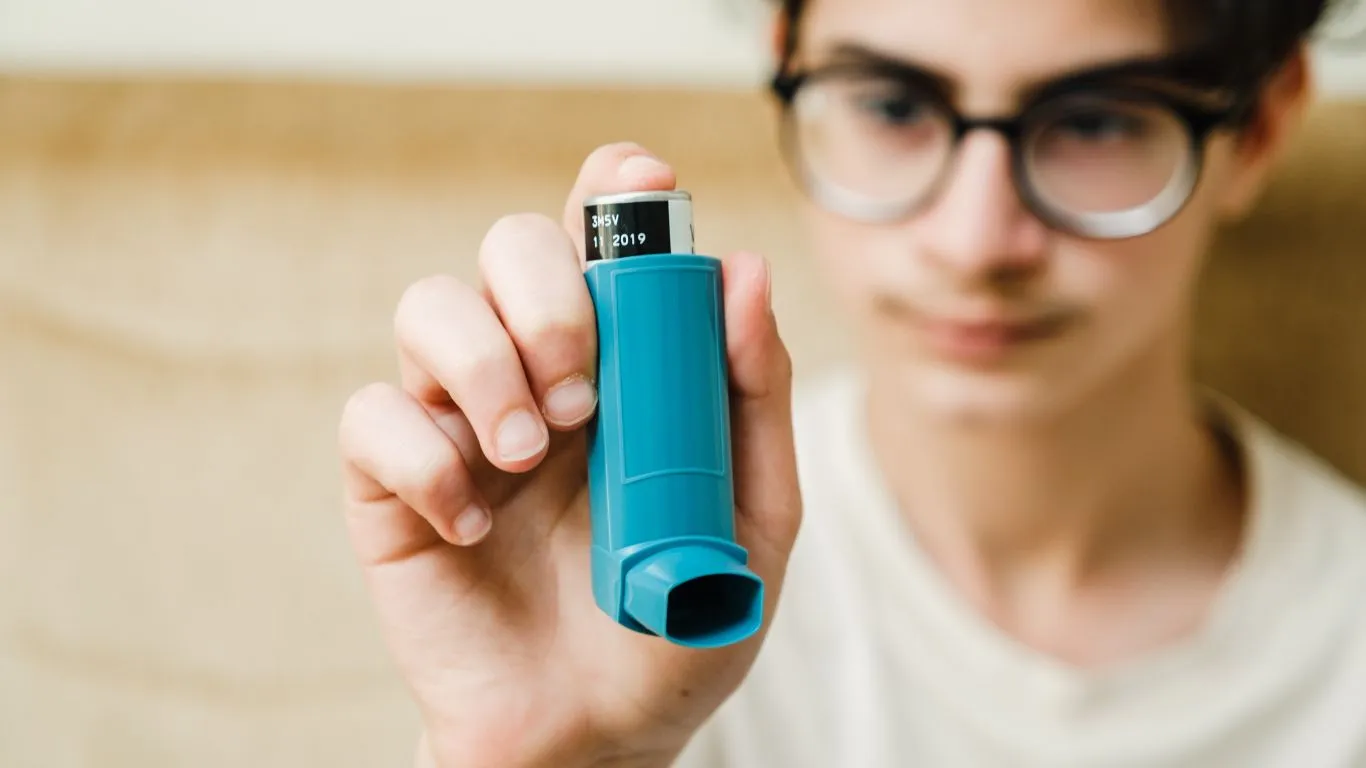Best Ways to Prevent Exercise-Induced Asthma and Breathe Easy
As a pulmonary nurse, I’ve seen first-hand how challenging exercise-induced asthma can be for many people. Whether you’re an athlete, someone just starting a fitness routine, or someone who’s struggled with asthma for years, managing this condition effectively is crucial for both performance and your overall well-being. One of the most common questions I get asked is: what are the best ways to prevent exercise-induced asthma?
If you’ve ever found yourself gasping for breath mid-workout or feeling like your chest is tightening when you push yourself too hard, then you’re not alone. The good news is that there are several steps you can take to keep those asthma symptoms at bay and enjoy your workout without worrying about an attack. Let’s dive into some practical, evidence-based tips that you can implement today.
The Role of Exercise-Induced Asthma: Understanding the Basics

Before we get into how to prevent it, let’s first understand what exercise-induced asthma (EIA) really is. It’s not a separate type of asthma, but rather a form of asthma that’s triggered by physical activity. The symptoms usually occur within 5 to 15 minutes after starting exercise and may last for about 20 to 30 minutes post-exercise. These symptoms can include wheezing, coughing, shortness of breath, chest tightness, and in some cases, even fatigue. The tricky part is that the symptoms can often be confused with a normal part of exertion, especially if you haven’t been diagnosed with asthma. I’ve had patients who, for years, simply assumed their difficulty breathing during workouts was just ‘part of the deal’ when being active. It’s easy to dismiss these signs, but recognizing them early can make a huge difference in managing your condition.
Common Triggers of Exercise-Induced Asthma
So what triggers EIA? Well, there are a variety of environmental and physical factors that can contribute to exercise-induced asthma. The most common triggers include:
- Cold, dry air: Breathing in cold air can dry out and irritate your airways, making asthma symptoms more likely to flare up.
- Air pollution: Pollutants in the air, like dust or pollen, can aggravate your asthma and make it harder to breathe during exercise.
- Intense or prolonged exercise: Pushing yourself too hard, too fast, especially without warming up properly, can trigger asthma symptoms.
- Allergens: Seasonal allergens like pollen or indoor allergens such as pet dander can cause inflammation in the airways, leading to asthma symptoms.
As you can see, EIA can be triggered by several factors, many of which are out of our control. However, there are plenty of steps you can take to minimize or even avoid these triggers altogether.
Best Ways to Prevent Exercise-Induced Asthma

Now, let’s talk about how you can prevent exercise-induced asthma. As someone who has worked with many patients over the years, I’ve seen how a combination of lifestyle changes, medication, and practical strategies can make all the difference. Let’s go through some of the best ways to prevent an asthma attack while exercising:
1. Consult with Your Doctor
Before making any changes to your exercise routine or asthma management plan, it’s important to have a chat with your healthcare provider. As a nurse, I can’t stress enough how crucial it is to have a tailored plan for managing asthma. Your doctor may prescribe a rescue inhaler (such as albuterol) or an anti-inflammatory medication (like corticosteroids) to help prevent symptoms. In some cases, they may even suggest taking the medication before exercise to prevent an attack.
2. Warm Up Properly
I can’t tell you how many people skip the warm-up, thinking it’s a waste of time, but trust me, it’s essential. A proper warm-up helps prepare your lungs and muscles for the intensity of your workout. For those with EIA, warming up gently helps ease your body into exercise, reducing the chance of an asthma attack. Try to include dynamic stretches, light jogging, or walking to gradually increase your heart rate before diving into more intense activities.
3. Take It Easy and Build Gradually
When you’re new to exercise or returning after a break, it can be tempting to jump straight into high-intensity workouts. However, for those with EIA, it’s important to gradually build up your stamina and avoid sudden bursts of extreme effort. Start slow and increase the intensity over time, allowing your body and lungs to adapt. You’ll find that pacing yourself not only reduces the risk of an asthma attack but also improves your endurance in the long run.
4. Choose the Right Exercise
If you have exercise-induced asthma, some activities may be less likely to trigger symptoms than others. In my experience, activities like swimming, cycling, or walking tend to be easier on the lungs compared to high-impact exercises like running or weightlifting. Swimming, in particular, is a great option because the warm, moist air helps prevent your airways from drying out and becoming irritated. It’s also a low-impact activity, so you’re less likely to push yourself too hard, too quickly.
5. Use a Face Mask in Cold Weather
If you live in a place where temperatures drop, exercising outdoors during the winter months can be a challenge for those with EIA. Cold air can constrict your airways, leading to wheezing and shortness of breath. One simple solution is wearing a face mask or scarf to warm the air before it enters your lungs. This can make a significant difference, especially if you’re exercising outdoors in chilly temperatures.
6. Stay Hydrated
Keeping yourself hydrated before, during, and after exercise is another key strategy in preventing EIA symptoms. Dry air, along with dehydration, can worsen asthma symptoms, making it harder to breathe. Drink plenty of water throughout the day and try to sip on fluids during your workout to keep your airways moist and your body in optimal condition.
There are a number of ways you can control or prevent exercise-induced asthma. Each individual is different, and what works for one person might not work for another, but these tips should provide you with a solid foundation for managing your asthma and enjoying your workouts. The key is being proactive and taking the necessary steps to prevent attacks before they happen.
Managing Exercise-Induced Asthma Through Lifestyle Changes

When it comes to managing exercise-induced asthma, lifestyle changes can play a huge role. I’ve worked with countless patients who initially felt defeated by their asthma diagnosis, but with some simple tweaks to their daily habits, they saw major improvements in both their lung function and overall quality of life. These aren’t quick fixes, but they’re sustainable changes that can make a long-term difference.
1. Maintain a Healthy Weight
One factor that often gets overlooked when managing asthma is weight. It’s no secret that carrying excess weight can put extra strain on the body, and this can exacerbate asthma symptoms. The lungs have to work harder to deliver oxygen to the body, and the added pressure on your diaphragm can make it harder to breathe. From my experience, patients who worked on maintaining a healthy weight often saw a reduction in the frequency of their asthma attacks. This doesn’t mean you have to embark on an intense weight loss journey overnight—small, consistent changes like choosing healthier meals and incorporating more physical activity can do wonders.
2. Improve Your Diet to Support Lung Health
Your diet has a big impact on your asthma management. While there’s no magic food that will instantly cure EIA, there are certain foods that can support better lung function. Omega-3 fatty acids, which are found in fish like salmon, walnuts, and flaxseeds, are known to have anti-inflammatory effects that may help reduce airway inflammation. Antioxidants found in fruits and vegetables—especially leafy greens—also play a key role in keeping the airways clear. One of my go-to recommendations is to load up on vitamin C-rich foods like oranges, strawberries, and bell peppers. These not only boost your immune system but also have anti-inflammatory benefits.
Of course, on the flip side, certain foods might make asthma symptoms worse. Dairy, for example, can increase mucus production, which may worsen congestion and make breathing difficult for some people. If you notice that dairy or other foods seem to trigger your asthma, it might be worth trying an elimination diet or consulting with a nutritionist to pinpoint any potential culprits.
Breathing Techniques and Relaxation Methods to Ease Asthma Symptoms

When you’re managing exercise-induced asthma, your breathing technique can make all the difference. I’ve often recommended deep breathing exercises to patients as a way to help control their asthma symptoms, especially when they feel an attack coming on during physical activity. Controlled breathing helps you remain calm, keep your airways open, and reduce the feeling of tightness in your chest. Let’s go through a few effective techniques:
1. Pursed Lip Breathing
Pursed lip breathing is a simple yet effective technique for slowing down your breathing and ensuring that you’re fully exhaling the air from your lungs. To do this, you inhale through your nose for about two seconds, and then exhale slowly through pursed lips (like you’re blowing out a candle) for about four seconds. I’ve seen patients use this technique successfully to reduce their shortness of breath during a flare-up. It’s also a great relaxation method after a workout to calm your breathing and heart rate.
2. Diaphragmatic Breathing (Belly Breathing)
Another technique I often recommend is diaphragmatic breathing, which involves breathing deeply into your belly rather than your chest. By engaging your diaphragm, you maximize the amount of air your lungs can take in. This type of deep, belly breathing can help open up your airways and improve lung function, which is incredibly helpful both during and after exercise. It’s a bit of a game-changer for those with asthma, as it can really make a difference in how well you breathe, especially under physical stress.
3. Yoga and Meditation for Stress Reduction
Believe it or not, stress can also trigger asthma symptoms, and exercise-induced asthma is no exception. High levels of anxiety or tension can tighten your chest muscles, making it harder to breathe. This is where practices like yoga and meditation come into play. Over the years, I’ve seen patients who struggled with asthma find relief by incorporating mindfulness and yoga into their routines. These practices not only help to lower stress but also improve lung function by increasing flexibility and promoting deep, slow breathing.
Exercise Modifications for Those with Exercise-Induced Asthma

If you love to exercise but find yourself often sidelined by asthma symptoms, you’re probably wondering if it’s possible to still stay active without triggering an attack. The answer is yes! With a few modifications to your exercise routine, you can work out safely and effectively while minimizing the risk of an asthma flare-up. Here are some modifications that I’ve found helpful for many of my patients:
1. Opt for Low-Impact Activities
If high-intensity workouts like running or intense cardio often trigger asthma symptoms, consider switching to lower-impact exercises like swimming, walking, or cycling. These activities are easier on your lungs and can still give you an excellent workout. Swimming, in particular, is my top recommendation for people with asthma because of the warm, humid air, which helps prevent your airways from drying out and becoming irritated.
2. Avoid Exercising During Peak Pollution Hours
Exercise outdoors is a great way to stay fit, but if you’re living in an area with high air pollution, you might want to avoid exercising during peak pollution hours, typically in the morning or late afternoon. When pollution levels are high, pollutants like ozone and particulate matter can trigger asthma symptoms. If you have to exercise outdoors, try doing it early in the morning or later in the evening when pollution levels tend to be lower.
3. Consider Interval Training
Interval training, where you alternate between short bursts of intense exercise and periods of rest or low-intensity activity, can be a great option for those with exercise-induced asthma. The key is to avoid sustaining high-intensity exercise for long periods, which is more likely to trigger asthma. By incorporating intervals of rest, you allow your body to recover and prevent your airways from becoming too stressed out.
Remember, the goal is to keep moving and stay healthy, but also to protect your lungs in the process. With the right modifications and strategies, you can continue to enjoy physical activity without the worry of asthma attacks holding you back.
Long-Term Asthma Management: Keeping Exercise-Induced Asthma at Bay

Managing exercise-induced asthma (EIA) is not just about the day-to-day tips—it’s about adopting a long-term approach to care. As someone who works in pulmonary care, I’ve seen patients who’ve struggled for years with asthma but have found remarkable improvements through consistent, long-term strategies. The goal is to develop a management plan that not only helps you during your workouts but also enhances your overall lung health in the long run. Let’s explore some key long-term strategies to keep asthma symptoms under control.
1. Keep Up with Regular Medical Check-ups
One of the best things you can do for your asthma is to keep up with regular check-ups. Asthma is a chronic condition, and symptoms can change over time, so it’s essential to revisit your treatment plan with your doctor regularly. I can’t tell you how many times I’ve seen a patient’s asthma symptoms improve just by tweaking their medication or changing their inhaler regimen. Your doctor might also suggest a spirometry test, which measures how well your lungs are functioning, to see if your asthma management plan is still working effectively.
2. Follow Your Asthma Action Plan
If you have asthma, you likely have an asthma action plan provided by your doctor. If not, it’s a good idea to ask for one. This action plan lays out steps to take in the event of an asthma flare-up, including when to use your inhaler, when to seek medical help, and how to monitor your symptoms. I encourage my patients to keep their asthma action plans in a visible place and even have a digital version on their phones. It’s especially important for athletes and fitness enthusiasts because it ensures you’re always prepared in case of an emergency during or after exercise.
3. Be Consistent with Your Medication
Consistency is key when it comes to asthma medication. As a pulmonary nurse, I often see patients who forget to take their controller medications regularly, thinking they only need their rescue inhalers when symptoms arise. Controller medications, such as inhaled corticosteroids, are used to reduce inflammation in the airways and prevent symptoms before they start. Skipping doses can lead to flare-ups, making it harder to manage your asthma. Even if you feel fine, sticking to your prescribed medication regimen is one of the best ways to prevent asthma attacks during exercise. And of course, always have your rescue inhaler handy just in case.
Recognizing When to Seek Medical Help

Even with the best prevention strategies, sometimes asthma symptoms can become overwhelming. It’s important to know when to seek medical help. I’ve seen patients put off seeking care because they were unsure whether their symptoms warranted a trip to the doctor or emergency room. However, early intervention is key to preventing a more severe episode. Here are some signs that you should seek medical attention:
- Worsening shortness of breath that doesn’t improve with your usual medications.
- Frequent use of your rescue inhaler (more than twice a week) or requiring it to control symptoms.
- Difficulty speaking due to breathlessness, indicating more severe airway constriction.
- Symptoms lasting longer than usual or not responding to usual asthma treatments.
If you experience any of these signs, don’t hesitate to reach out to a healthcare professional. The sooner you act, the sooner you can get back to your normal activities, including exercise.
Additional Resources and Support for Managing Asthma
As you work to manage exercise-induced asthma, you don’t have to do it alone. There are plenty of resources and communities out there that can provide support and information. Here are a few places I recommend for reliable asthma-related resources:
- Asthma and Allergy Foundation of America (AAFA) – Provides educational materials, support groups, and resources for asthma management.
- Centers for Disease Control and Prevention (CDC) Asthma – Offers information about asthma symptoms, triggers, and how to manage asthma.
- American Lung Association – A great resource for lung health information and advocacy for those with asthma.
Having access to these resources can empower you to take control of your asthma management plan and ensure that you’re making informed decisions about your health. And don’t forget to reach out to your healthcare provider with any concerns—you are your best advocate when it comes to managing your asthma.
Disclaimer
The information provided in this article is for educational purposes only and should not be considered as medical advice. Always consult with your healthcare provider before making any changes to your treatment or exercise plan. The views and opinions expressed here are based on personal experience as a pulmonary nurse and general knowledge of asthma management. Your individual health needs may vary, and it’s important to work closely with your doctor to create a personalized plan for managing exercise-induced asthma.

Bianca Nala is a compassionate Nurse Practitioner with a strong background in primary and respiratory care. As a health writer for Healthusias.com, she combines her clinical expertise with a talent for clear, relatable storytelling to help readers better understand their health. Bianca focuses on topics like asthma, COPD, chronic cough, and overall lung health, aiming to simplify complex medical topics without losing accuracy. Whether she’s treating patients or writing articles, Bianca is driven by a single goal: making quality healthcare knowledge accessible to everyone.






